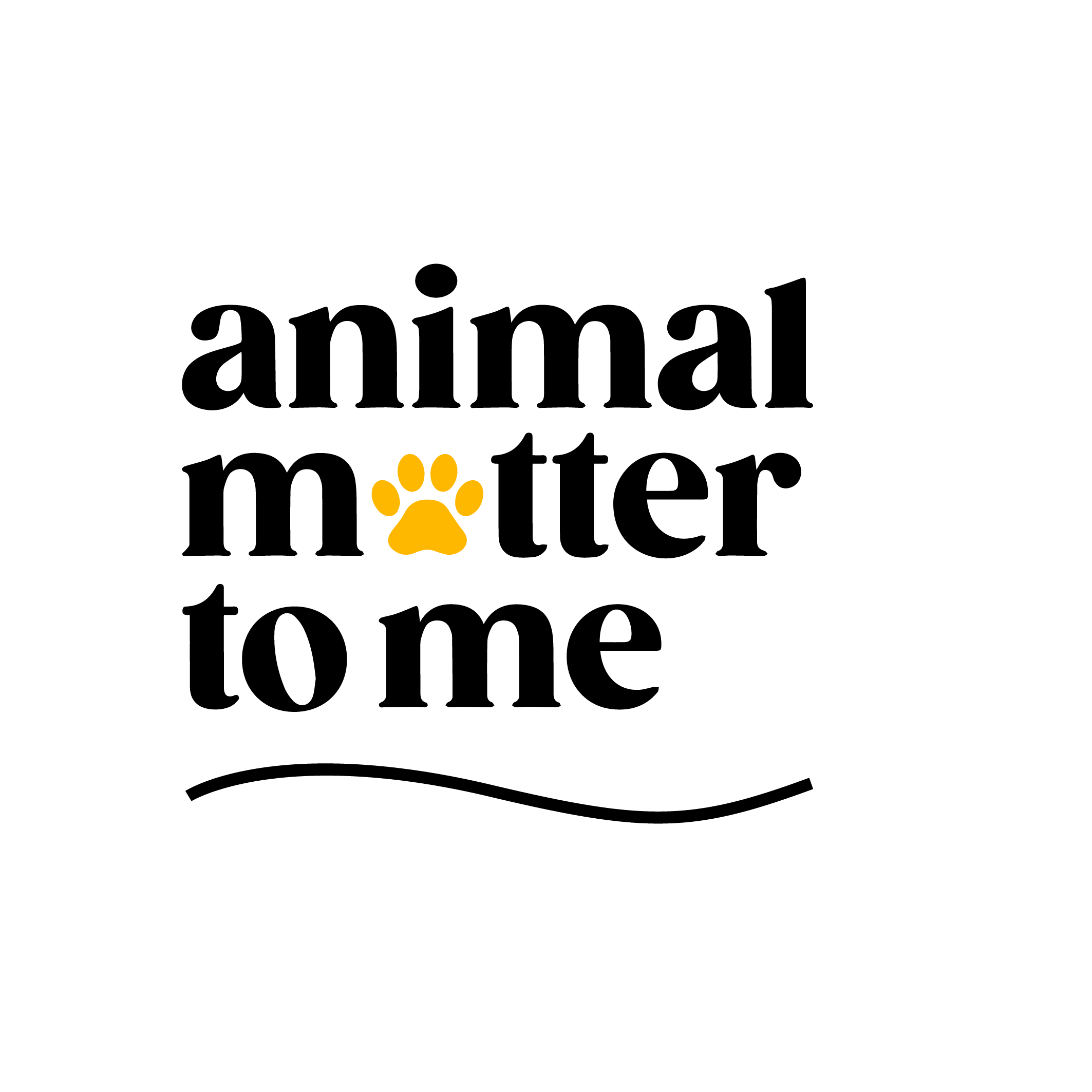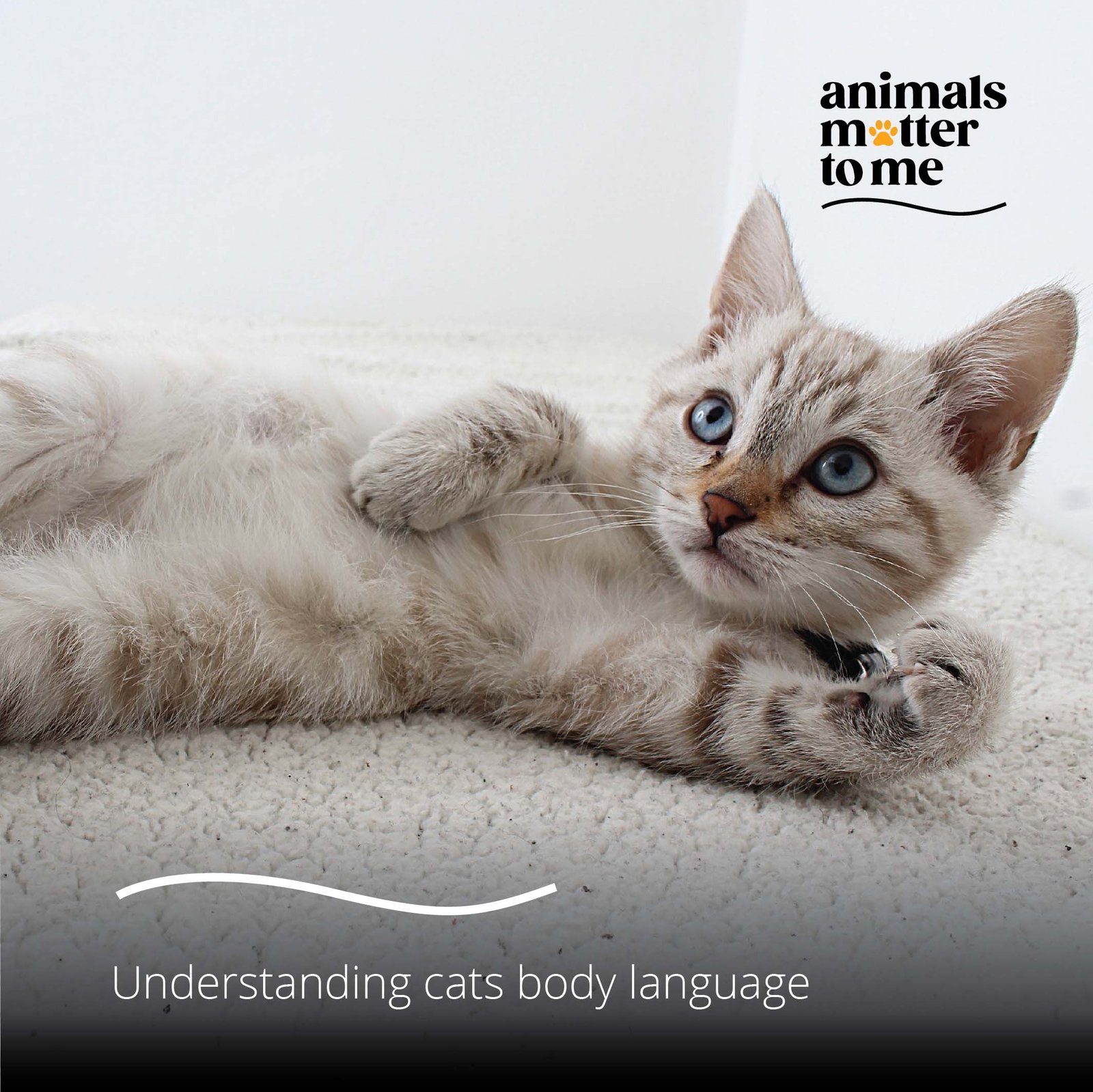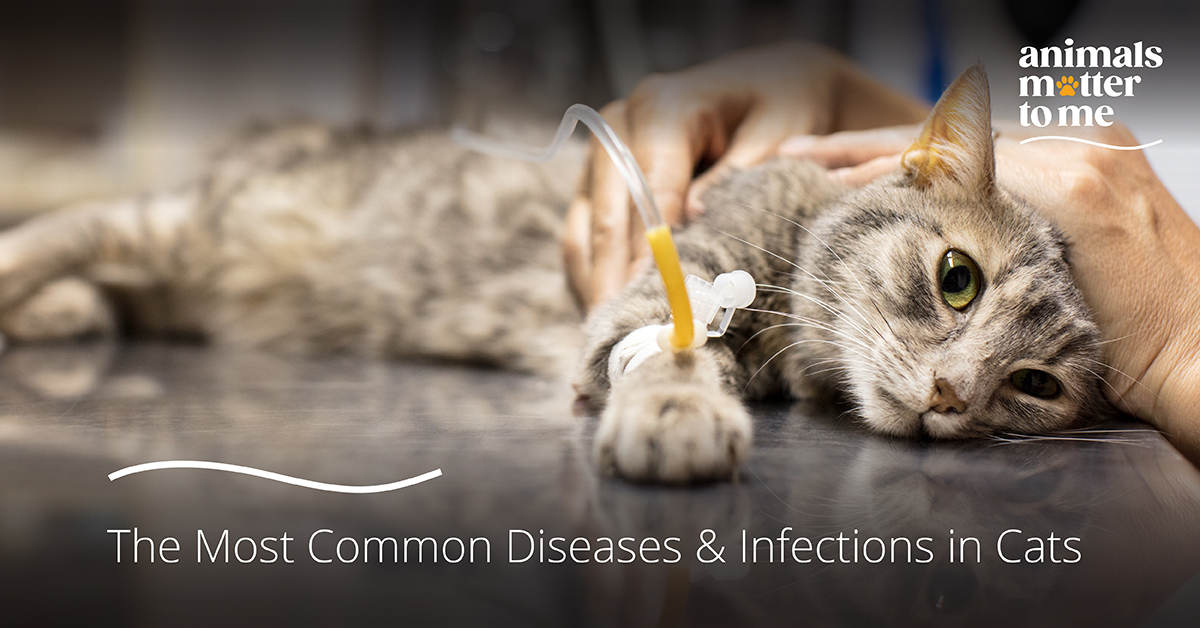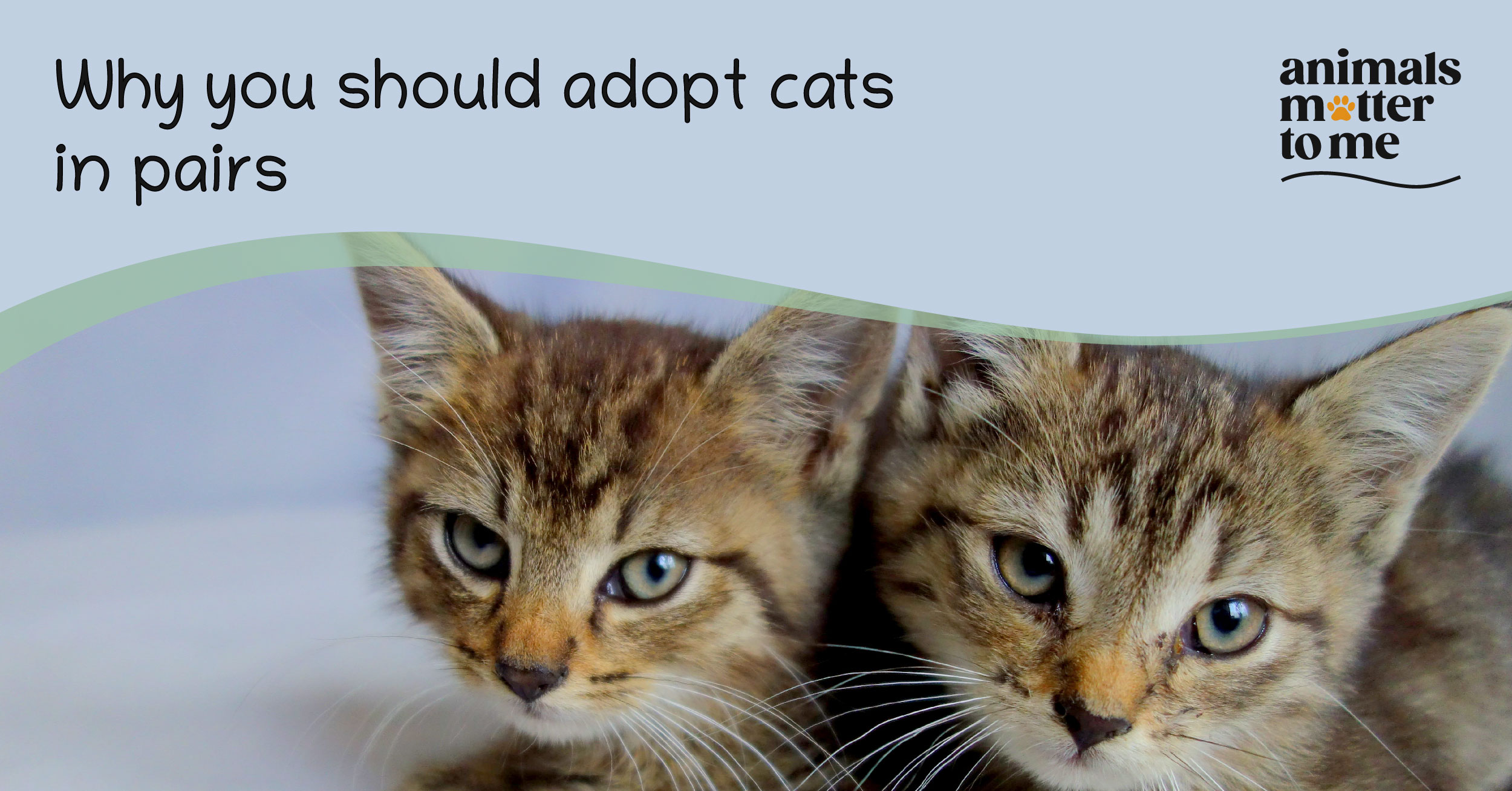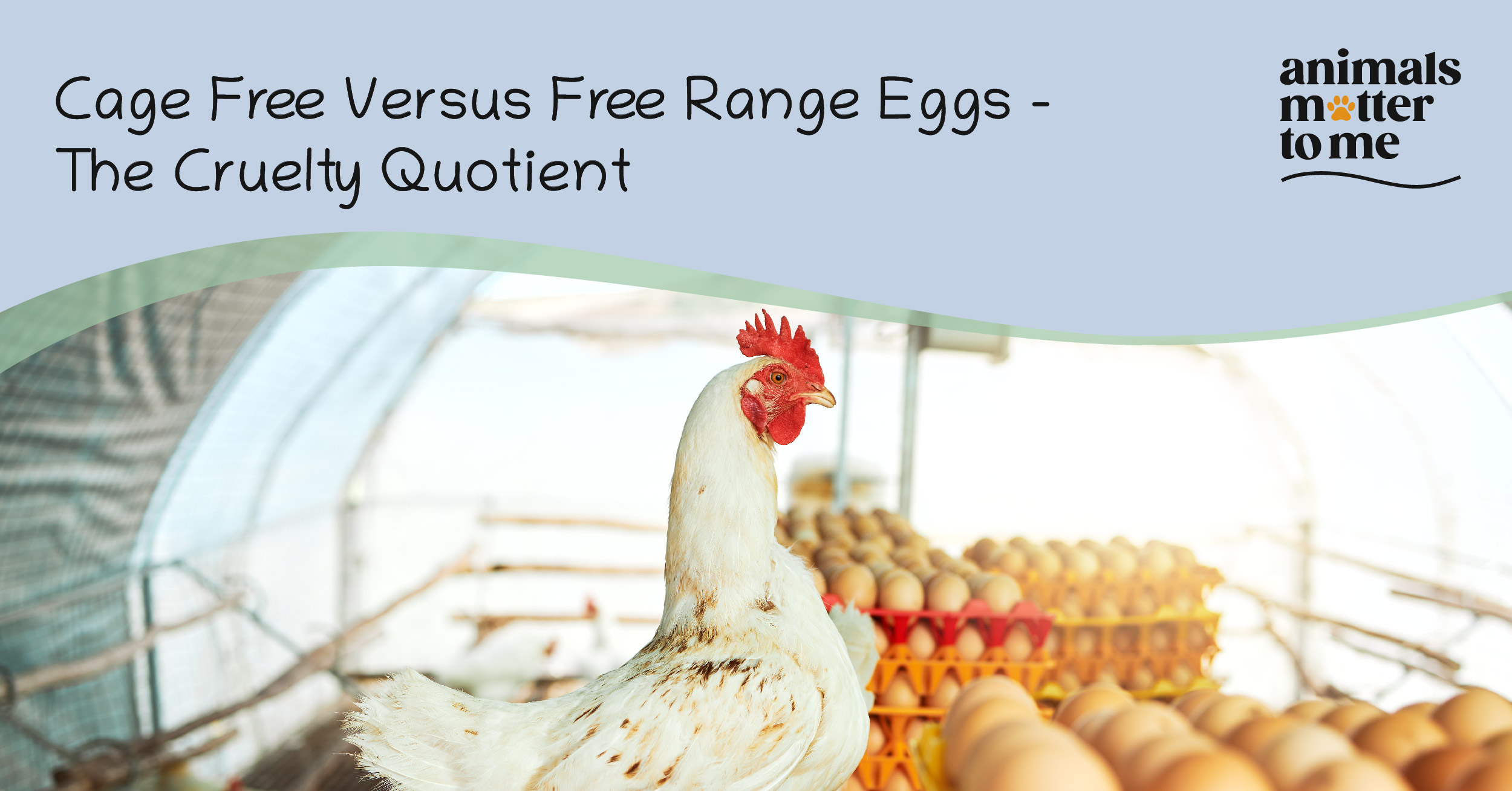Animals can’t use human speech to tell us what’s on their minds, but they do have ways of communicating. You can tell a lot about what an animal is feeling by the position of their body. Cats, for that matter, are very expressive. Everything from the way their tail twitches to the position of their ears is a form of communication.
Today, we will help you decode a cat’s body language.
Happy or casual
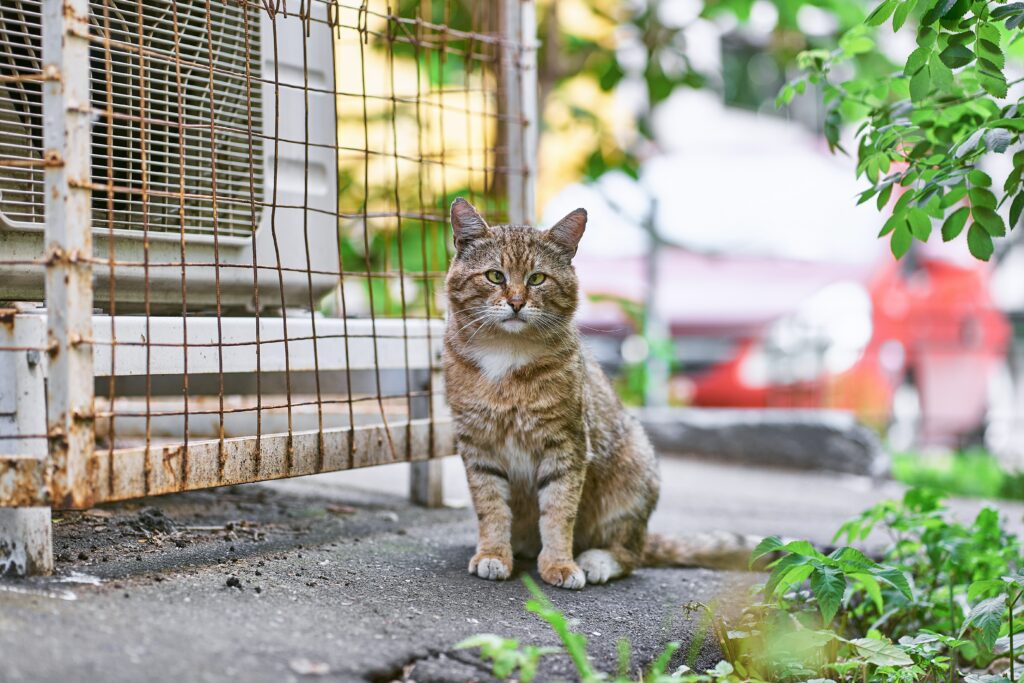
When a cat is happy, its muscles loosen and head will comparatively be in a calmer position than watchful turns. Ears will be in a natural position. While the ears might twitch in response to a noise, they won’t be swivelling. A happy, relaxed cat will let its tail extend and lie flat, and likewise the fur.
Playful
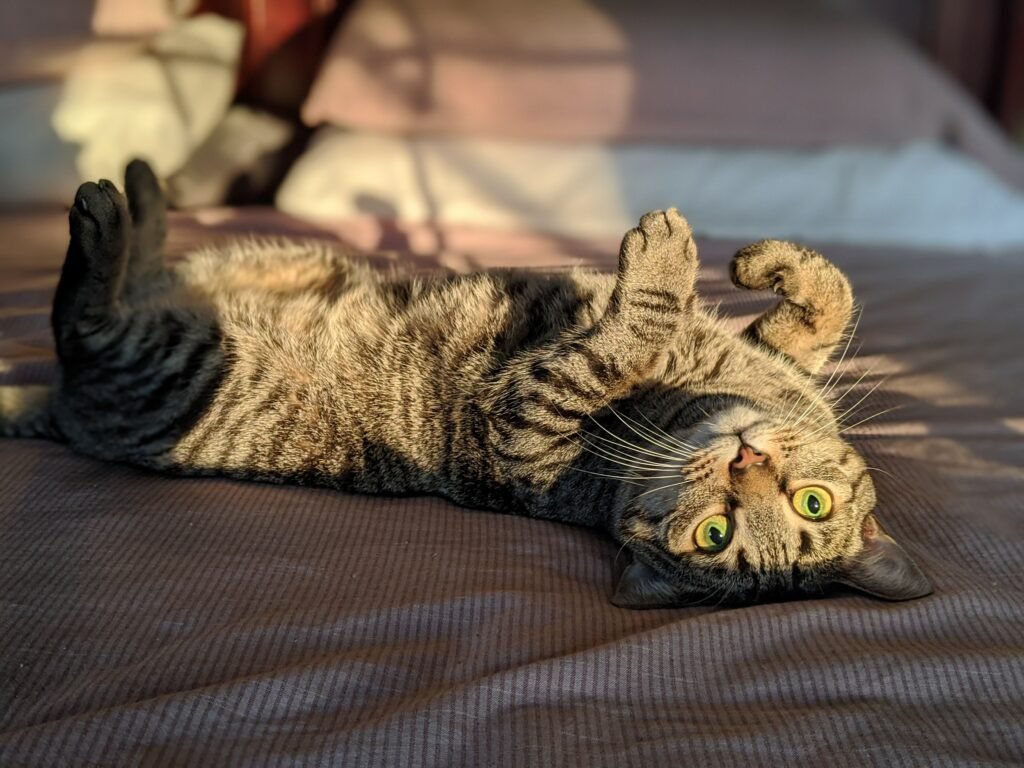
When a cat wants to play, it’ll show a lot of energy. The ears will be pointed up and forward making the cat look alert. Pouncing is another sign that a cat is feeling playful. The cat may crouch with the hind end raised as if ready to pounce. Some cats will keep their tails down, seemingly getting ready to pounce. When playing, a cat may put itself into compromising positions such as rolling on its back, something it would not do if it felt intimidated.
Scared or worried
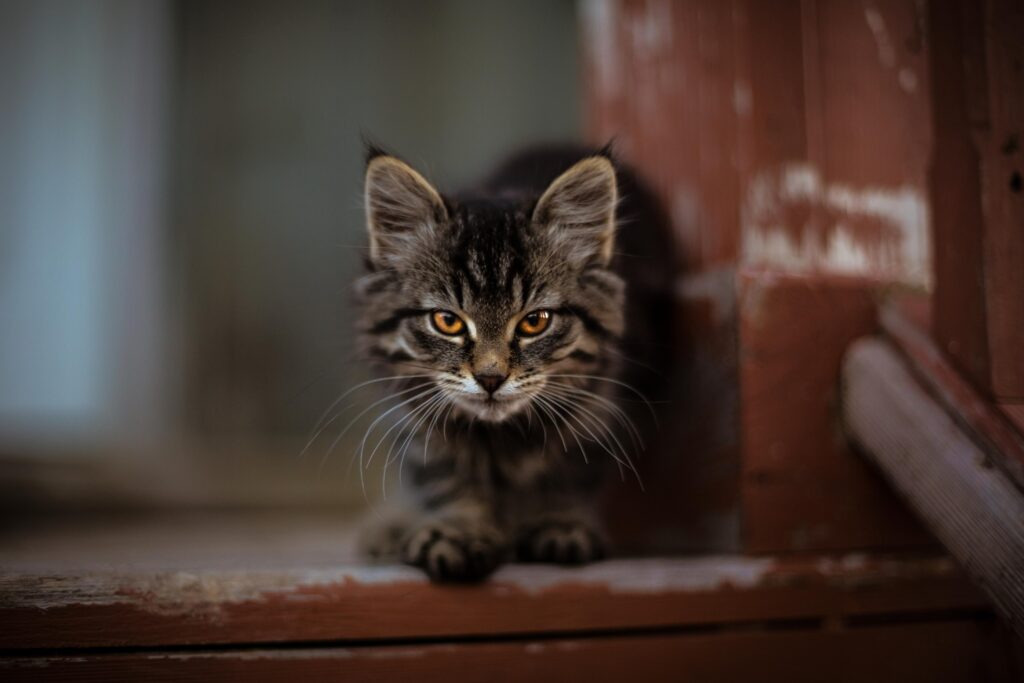
A scared cat has an arched back, raised tail, and standing fur. It might curl its tail around the body to protect itself from being grabbed or bitten. Hissing or showing teeth in defence is another common sign. It may flick its ears back and forth rapidly to monitor sounds. Alternatively, it may draw its ears down so they point sideways or lie flat against the head. The more a cat’s ears swivel sideways and backward, the greater the cat’s arousal or distress. Backward ears and a hiss or swipe are a sure sign the cat feels threatened or doesn’t like what you’re doing.
Angry
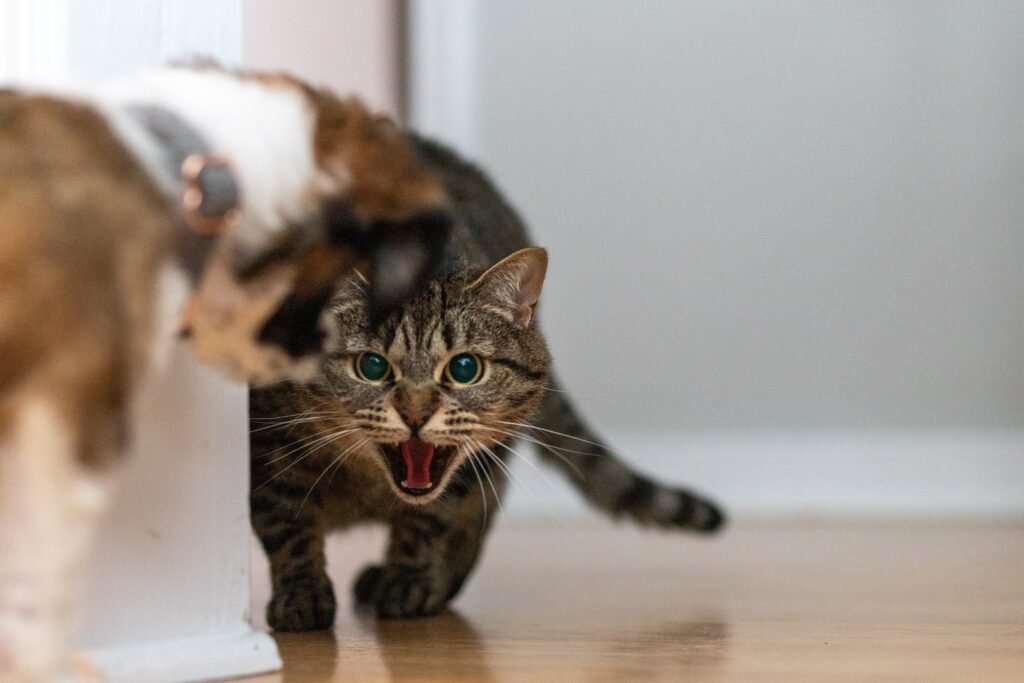
An angry cat will be rigid, with its tail held out stiff and straight or curled around and under its body. It could be hissing, spitting or growling. The ears will be tense, and flat back against the head, and whiskers will be stiff away from the face. Some cats might have round and unblinking eyes. It ook large and threatening, with fur erect, stiff front legs, and crouching.
Affectionate
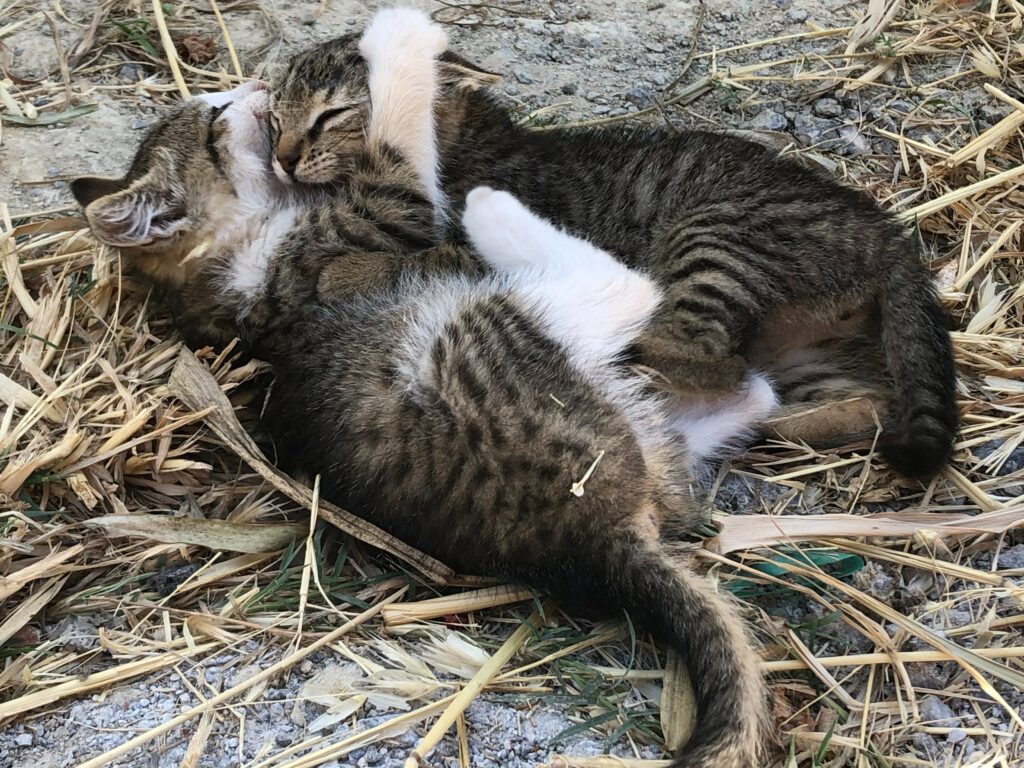
When showing its affection, a cat rubs itself on you, often circling, or turning in little figure eights. The cat’s tail will be held high, often with a tiny curve at the very end, showing that it’s happy to see you. Head butts and chin rubbing are clear signs that the cat loves you, because cats have scent glands in their face that allow them to claim friends and objects as their own.
Illness
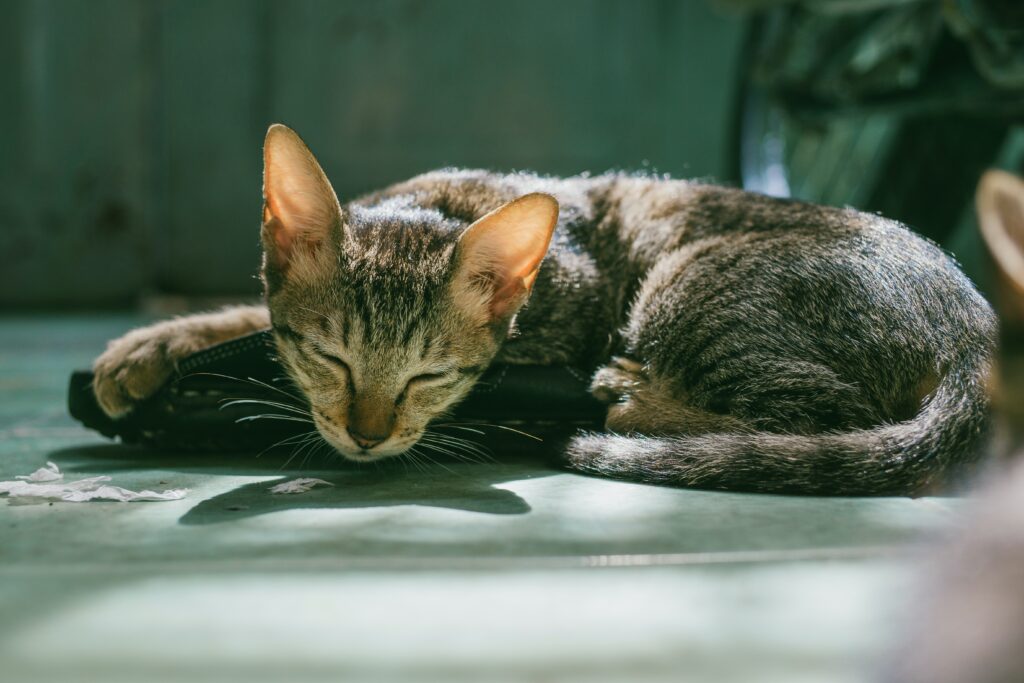
Cats are extremely good at hiding illness, so small body cues can be the first signs of trouble. Sick cats will have lower energy levels. The cat may lie in a crouched position with its head and ears down. If it’s in pain, it might lie down in a way to avoid making it worse. Eyes might look dull or glassy, and the ears will droop to the sides of its head. Whiskers might be pointing downward. It may hold its head, feet and tail very close to the body. You may notice eye or nose discharge, or drooling as well.
When you understand how your cat is feeling, you can better respond to its needs and have even stronger, happier relationships with them. So the next time you want to be sure of what the cat is trying to say to you, take a meow-ment to examine its body language.
